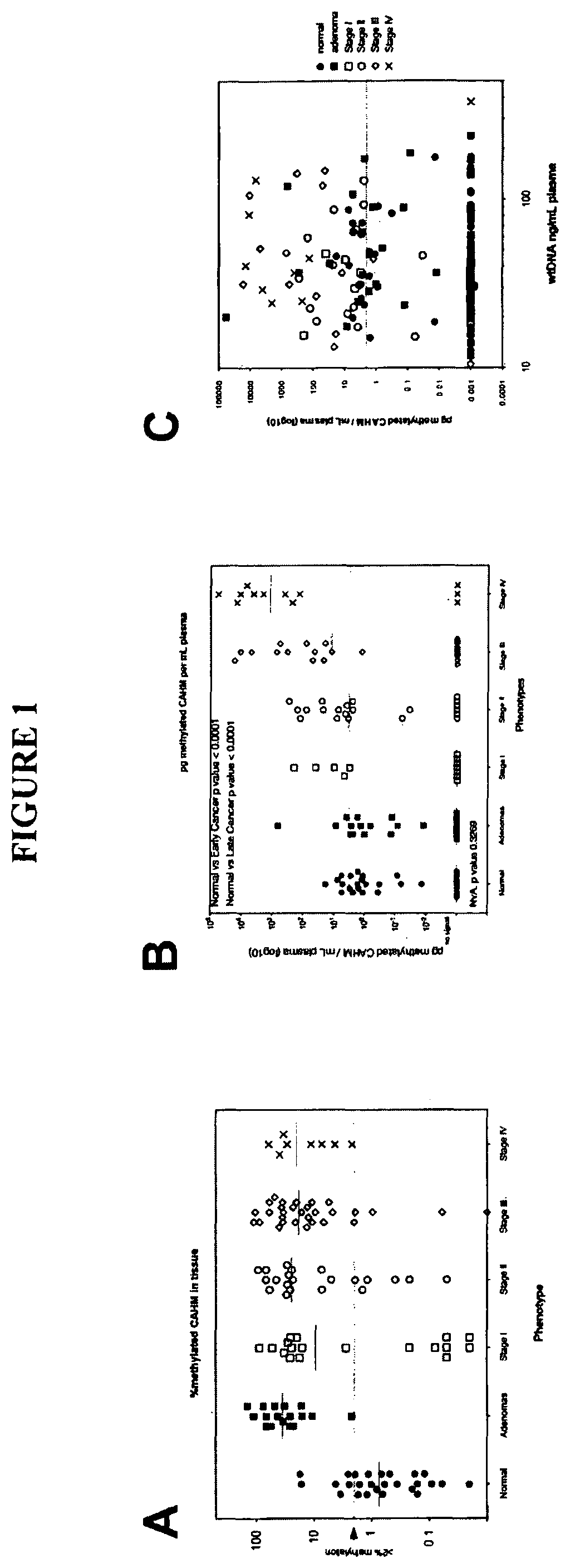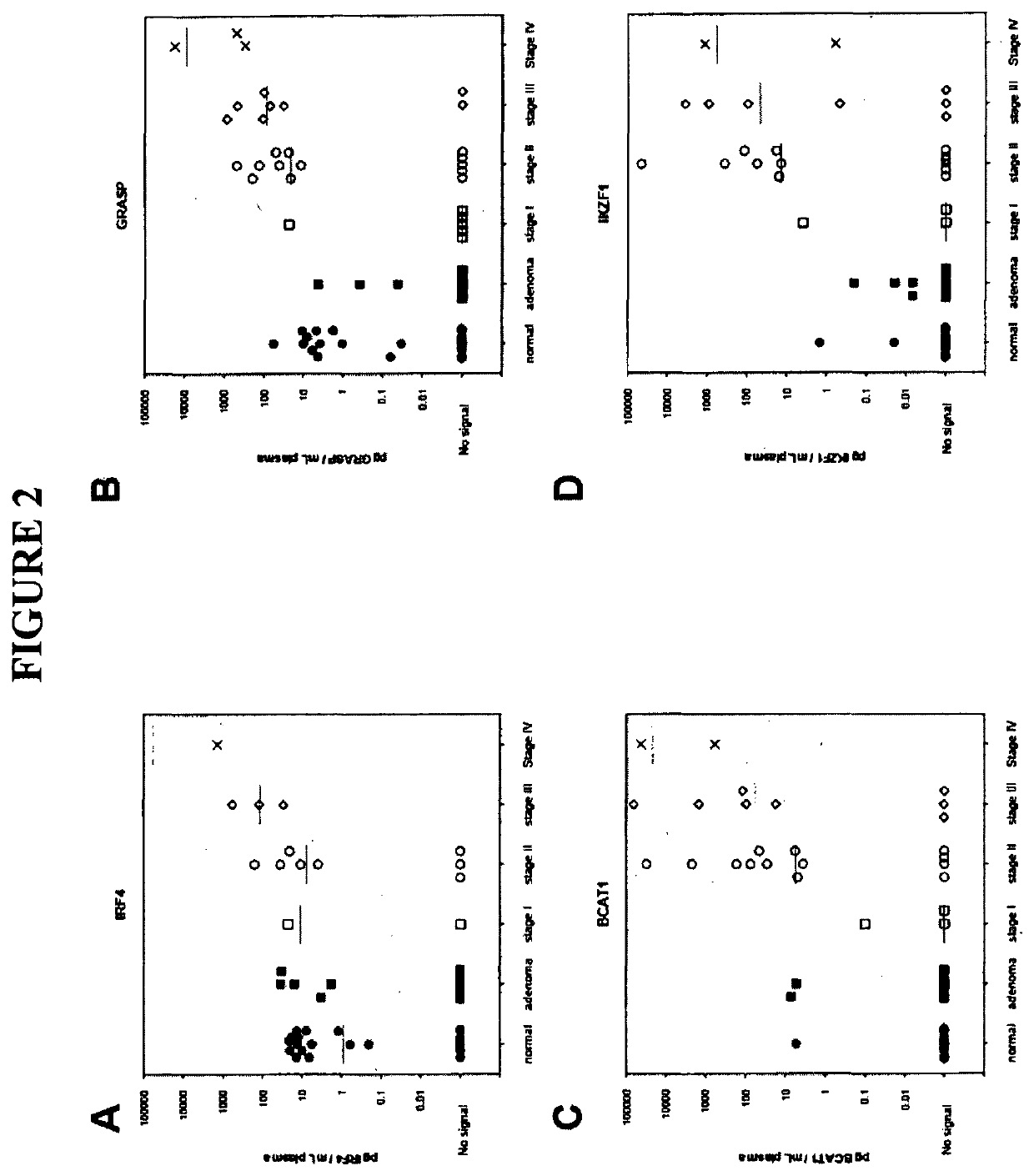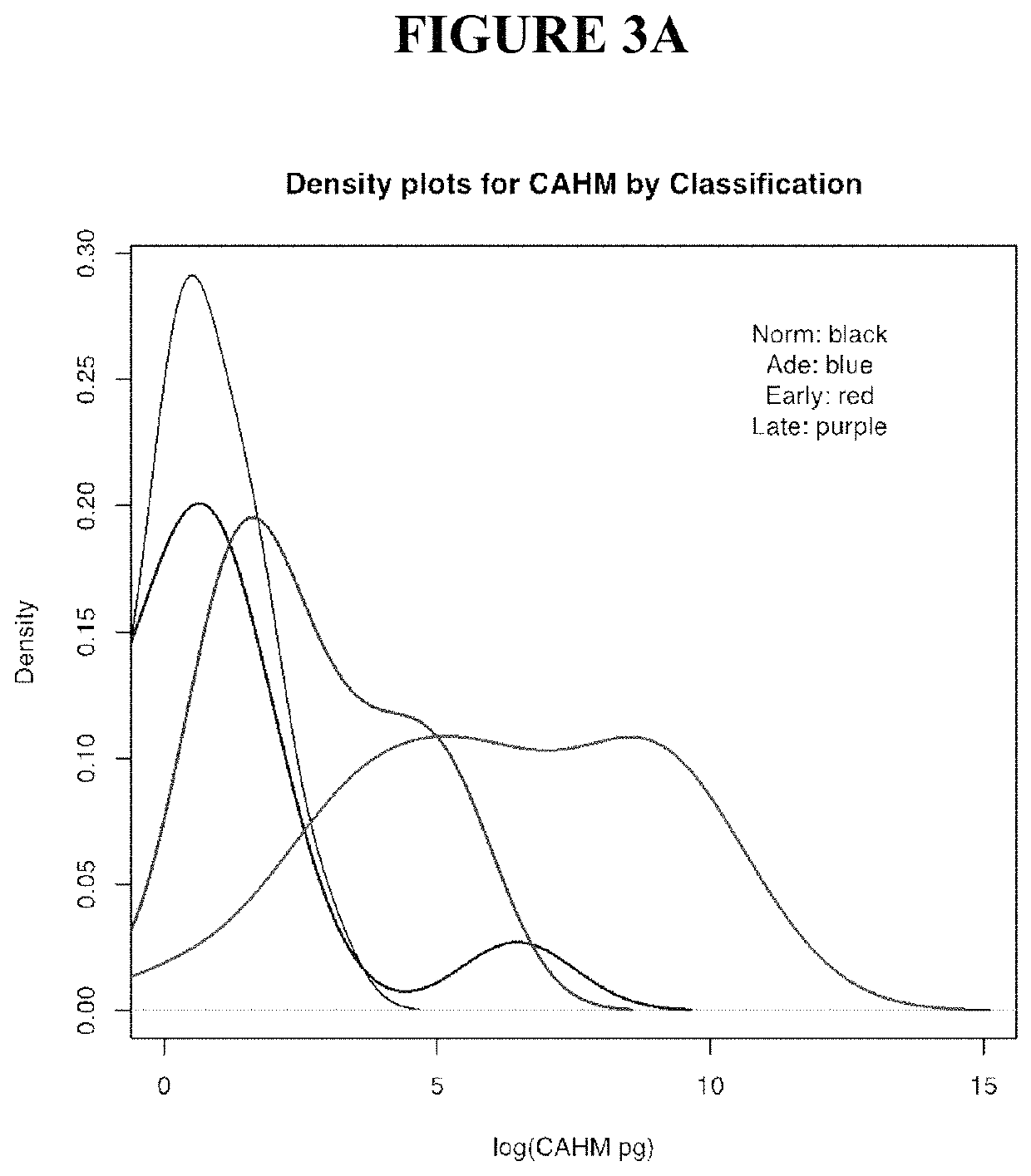Method of screening for colorectal cancer
a colorectal cancer and neoplasm technology, applied in the field of colorectal cancer classification, can solve the problems of inconvenient diagnosis, inability to accurately predict the risk of cancer, and inability to reliably diagnose colorectal cancer symptoms
- Summary
- Abstract
- Description
- Claims
- Application Information
AI Technical Summary
Benefits of technology
Problems solved by technology
Method used
Image
Examples
examples
Materials and Methods
[0273]Tissue DNA samples were acquired through a commercial specimen bank (BioServe, @, US) and a tertiary referral hospital tissue bank in Adelaide, Australia. Blood plasma specimens were acquired from a commercial specimen bank (Proteogenex, Culver City, Calif.) and a tertiary referral hospital in Adelaide, Australia. Blood specimens were classified as normal, adenoma or cancer based on colonoscopy results verified (where appropriate) by histopathology. This also identified the stage of the cancer. Peripheral blood was drawn into K3EDTA VACUETTE blood tubes (Greiner-One, Monroe, N.C.) and transported to the processing laboratory on wet ice. Whole blood was centrifuged at 1,500 g (4° C.) for 10 minutes within 4 hours of blood draw and plasma was collected. The plasma was centrifuged for a second time at 1,500 g (4° C.) for 10 minutes, where after the plasma was collected and stored at −80° C. until further use.
Tissue DNA Extraction & Bisulfit...
PUM
| Property | Measurement | Unit |
|---|---|---|
| size | aaaaa | aaaaa |
| temperature | aaaaa | aaaaa |
| volume | aaaaa | aaaaa |
Abstract
Description
Claims
Application Information
 Login to View More
Login to View More - R&D
- Intellectual Property
- Life Sciences
- Materials
- Tech Scout
- Unparalleled Data Quality
- Higher Quality Content
- 60% Fewer Hallucinations
Browse by: Latest US Patents, China's latest patents, Technical Efficacy Thesaurus, Application Domain, Technology Topic, Popular Technical Reports.
© 2025 PatSnap. All rights reserved.Legal|Privacy policy|Modern Slavery Act Transparency Statement|Sitemap|About US| Contact US: help@patsnap.com



